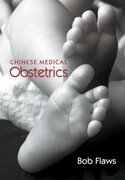Acupuncture & TCM Articles
Acupressure: Induces Labor and Controls Pain during Childbirth
Inducing labor to bring forth the birth of a baby has become a common event in Western hospitals. Traditional Western medication uses pharmaceuticals to induce labor, but there is an alternative to this risky approach. Labor acupressure is a holistic method that has become very popular among pregnant women and labor care professionals. This is because acupressure for labor provides a safe and natural alternative to induce labor, without the risks of pharmaceuticals.
Acupressure for labor is a natural method that rapidly increasing group of labor care professionals are using and recommending to pregnant mothers, especially those who are threatened by medical labor induction. This is because acupressure for labor provides a safe and natural alternative to induce labor, without the risks of medication.
One of the most common methods used in hospitals, to artificially stimulate the labor to start, is to administer a drug known as Pitocin. It may or may not work within the next two days. When it works, Pitocin usually produces a very strong reaction and many experience strong labor pains. The effects that the drug might have on the unborn child are not fully understood. There is also a good chance of some side effects that range from nausea and vomiting to more severe conditions, which usually lead to a cesarean section. All in all, pharmaceutical labor induction does not appear to be the best way to get labor and delivery started.
The natural and holistic approach of acupressure in bringing on the labor and delivery has absolutely no adverse effect on the baby as no pharmaceuticals are being introduced into the body. It's safe for the mother, as well, because it only helps your body to function better. A possible side effect is a slight chance of minimal soreness at the site of acupressure point stimulation after repeated treatments.
Acupressure encourages the labor to start by helping the cervix to ripen and dilate, and stimulating the contractions. Some acupressure points help to get the baby to engage better, if he hasn't descended well.
A recent study tested labor acupressure on a group of women who were near or past their due date, and used a control group of women in similar condition. (Complement Ther Med. 2005) The pregnant women in the control group were not given acupressure treament. As the result of acupressure treatment, women in the acupressure group went into labor naturally, significantly more often than the women in the control group not using any acupressure techniques.
The management of labor pain and the prevention of suffering are major concerns of many labor care professionals and expectant mothers. As the risks of pain medications during labor are now known better, the drug-free approaches for controlling labor pains are becoming more common among labor care professionals and pregnant mothers.
Treating specific acupressure points for pain relief has been shown to increase the release of endorphins which are extremely effective in relieving pain. They also improve the body's performance and promote positive feelings. A recent study revealed that treatment of one single pain relieving pressure point remarkably reduced labor pains, according to the ratings that birthing mothers gave during their labor and delivery (J Altern Complement Med. 2004).
Additionally, the study showed that the total labor time (measured from 3 cm dilatation to delivery) was, surprisingly, much shorter in the acupressure group than in the control group not using acupressure for labor.
Mothers who have used acupressure during labor have been incredibly satisfied with the method. They felt that it was very helpful in keeping the control of their own labor and delivery. They found that labor acupressure helped their cervix to dilate, encouraged the contractions, and managed the labor pains, without the fear that the labor would slow down.
 Chinese Medical Obstetrics Chinese Medical Obstetrics
By Bob Flaws
DESCRIPTION: This book is both a study text and clinical manual on the Chinese medical treatment of obstetric conditions, or diseases women may experience during pregnancy, childbirth, and shortly thereafter. However, in addition to everything one would expect to find in such a book, this text also includes:
- Abstracts of recent Chinese research for most chapters
- Case history examples of common clinical presentations throughout the book
- Clinical tips at the end of each chapter from the authorís personal experience
- Special medicinals or important acupuncture points for specific conditions
- Cautions or danger signs that every practitioner of Chinese medical obstetrics needs to know
- An easy-to-follow two color design
- Protocols for five dozen Chinese gestational, birthing, and postpartum conditions
This book sets a new standard in the study and practice of Chinese medical obstetrics and should have a prominent place in the library of any Chinese medical practitioner specializing in gynecology or seeing pregnant and newly delivered woman.
|
